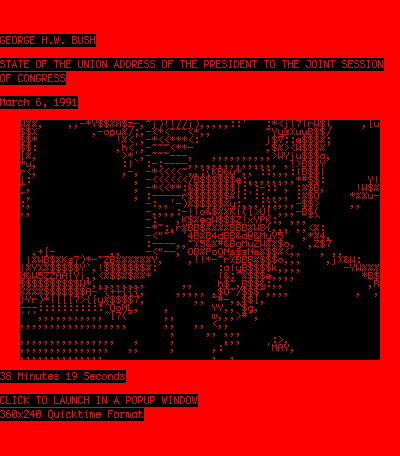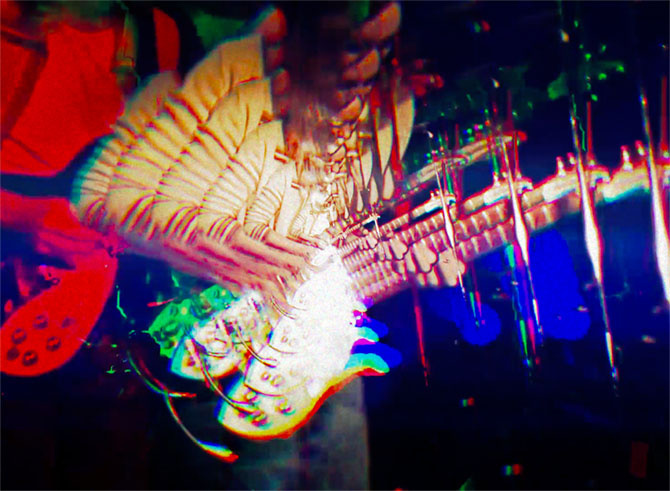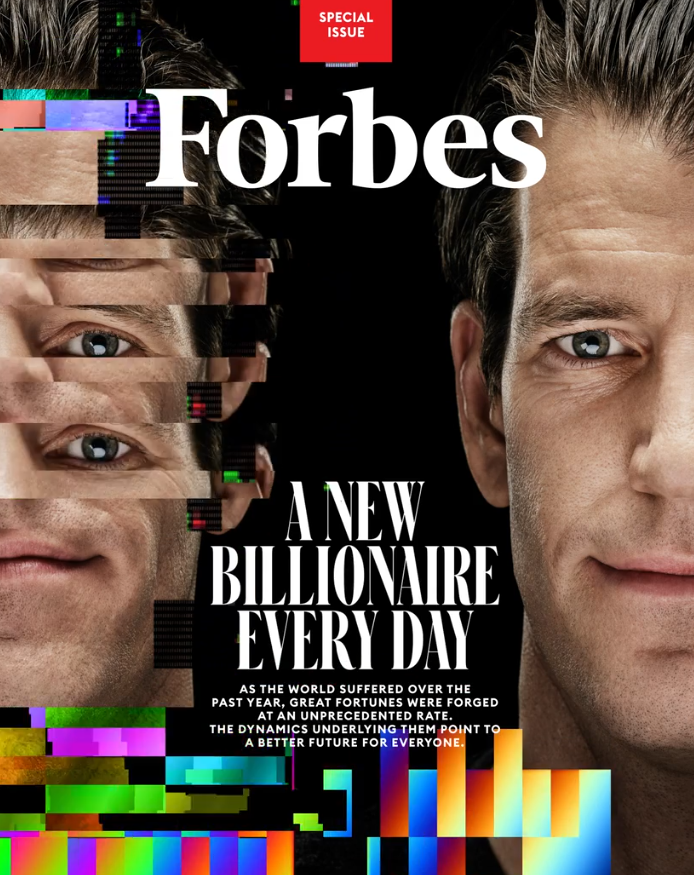Yoshi Sodeoka Rides the Psychedelic Wave
May 29, 2022
This is a research and writing sample from Art History 701 at SCAD. The assignment was to write a short research paper about a contemporary artist of my choosing.
Yoshi Sodeoka Rides the Psychedelic Wave
Contemporary artist Yoshi Sodeoka was an early pioneer in combining art and technology in the emerging internet age and continues to influence digital art and popular culture 30 years later. Art and technology have had a symbiotic relationship since the first pigments were applied to the Lascaux Caves in France, and Sodeoka is only one artist in an extensive line of artists and movements that consider the melding of art and technology as a means toward a better existence. However, his consistent body of tech-infused work stands above, shaping political discourse, popular music, as well as the technology used to buy and sell art itself.
Yoshi Sodeoka was born in Japan and later moved to the United States in 1989 to study art and design at Pratt Institute in New York City.1 Since moving to New York, Sodeoka’s career has spanned three decades combining art and cutting-edge technology to develop a style often described as psychedelic art. His success includes exhibitions at the Museum of Modern Art, The Whitney Museum, Tate Britain, and many others.2
Sodeoka was one of the earliest artists to integrate internet era technology in his art. For one of his first projects, he served in the role of Art Director in 1996 for Word Magazine, a webzine considered one of the first of its kind. Word Magazine included some of the first examples of pixel art on the internet. At the time, publishing daily art content on the internet and building a community around it was ground-breaking. In those early years, Sodeoka would begin experimenting with emerging technologies like DVD, Enhanced CD, and Macromedia Director. Eventually he turned to video, mashing up analog VHS signals with the personal computer, often moving images and signals back and forth between mediums to create a unique style.
Sodeoka’s desire to combine technology and art was not unlike the work of Experiments in Art and Technology (EAT), a collective of artists in the 1970s that combined multiple mediums with new forms of technology to create unique experiences. This comparison links Sodeoka with the likes of Robert Rauschenberg and Robert Whitman, two titans of the American art world. While the technology (wireless audio, sonar, and space age mirrors to name a few) EAT adopted was earlier and different from what Sodeoka would eventually adopt, the goals were similar: to enact change in the world using art and technology.
In the coming decades, Sodeoka would do exactly that by forming a multitude of experimental art collectives including Undervolt & Co and C404. Through these groups, Sodeoka would drive political discussion, shape what popular music looks like, and invent entirely unique motion graphics processes in After Effects along the way.
In 2004 Yoshi Sodeoka produced one of his pinnacle political art pieces, a digitally manipulated video of George H. W. Bush’s 1991 State of the Union Address titled ASCII BUSH (Figure 1). The video is rendered in American Standard Code for Information Interchange (ASCII) in which the subject matter appears as a constantly changing digital array of characters and symbols. The audio is digitized to make the voices sound robotic, and the cheering crowd sound like white noise. The result produces a very grating, flat, and programmatic feel to the topic of war and politics. The stateliness, patriotism, and presidential feel are erased, replaced with a cold, cruel, and unwavering drone of unfamiliar visuals and audio. The viewer is forced to experience the political message through a completely different lens.
More recently, Sodeoka was commissioned by the psychedelic music project Tame Impala to produce a music video for a track titled Elephant (Figure 2). With a background in music, Sodeoka tries to merge visual and sound together as a single entity, often visualizing color and shape in his mind before ever producing a single visual element.3 The process produces his signature psychedelic motion graphics style, a blend of analog and digital signals interacting, shifting in shape and color, and creating a sometimes-dizzying barrage of visual intensity. Elephant is no exception. The music video rolls, flashes, bends, duplicates, and explodes with color. The shifting visuals often keep pace and react with the underlying beat of the music to create a synthesis of audio and visual perfection. Sodeoka’s intense visual style pairs well with the repetitious, electronic, and distorted sounds of Tame Impala.
To achieve his unique visual style, After Effects has emerged as Sodeoka’s tool of choice. While After Effects is a common tool, his results are often in a class of their own. Going beyond simply running video through a series of effects, Sodeoka has developed his own entirely unique process by utilizing After Effects’ programmatic scripting engine Expression. Through programming, visuals can take on computational and randomized forms, producing unlimited unique outcomes that are often difficult to label as a specific category of art.
As technology has advanced throughout his three-decade career, Sodeoka has continued to embrace the latest tech-driven tools and concepts in his work. This is true today with Sodeoka’s adoption of cryptocurrency, specifically non-fungible tokens (NFTs), in many of his latest pieces. Whether cryptocurrency and NFTs are simply a marketing fad or here to stay remains to be seen, but Sodeoka has effectively harnessed their purpose in the current moment. His NFT art closely mimics his other pieces by using the same After Effects method to produce wild, abstract, and constantly shifting blobs of pixels that mesmerize the viewer in a manner appropriate for the current era of continuous consumption of media.
In addition to selling several of his own pieces as NFTs on platforms like Foundation, Sodeoka has been commissioned to collaborate with major brands such as Forbes to incorporate NFTs into fundraising campaigns. In the piece titled Merchants of Metaverse (Figure 3), Sodeoka collaborated with photographer Michael Prince for Forbes to create a digital version of a special edition magazine cover featuring the Winklevoss Twins of Silicon Valley fame.4 In this piece, Sodeoka repurposes a traditionally designed magazine cover and applies his trademark visual style of hybrid analog and digital glitches to give the cover an animated presence that is impossible to achieve in traditional print form. This is a notable example of multiple forms of technology coming together to create new experiences. Older print technology merges with more modern forms of graphic design which then merges with innovative After Effects and NFT processes creating completely new forms of art. Typography slices and splits, images break into blocky sets of pixels, and the entire cover begins to transform, revealing its digital essence. The visuals are fitting, referencing the subject matter of the cover: The Metaverse, Silicon Valley, and the investors driving it. In the end, the NFT auction raised $333,333 benefiting the Committee to Protect Journalists and the International Women’s Media Foundation.5
Yoshi Sodeoka’s body of work spans an impressive 30 years of incorporating the latest technology in his art. In a time in which the world experiences changes at a blindingly fast rate, Sodeoka’s art manages to keep pace. His ability to embrace change should be noted not only in the space of technology, but in the way that embrace affords him the ability to continue to be a part of popular culture and shape the way culture is defined visually. Whether through music, politics, or publishing, Sodeoka continues to challenge his viewers. With an impressive variety of work already behind him, what will the next 30 years of his technology infused art look like?

Fig 1. Yoshi Sodeoka, ASCII Bush, 2004, Digitally Filtered Audio and VIdeo, https://sodeoka.com/ASCII-BUSH

Fig 2. Yoshi Sodeoka, Elephant, 2012, After Effects Rendered Music Video, https://sodeoka.com/Elephant-Tame-Impala

Fig 3. Yoshi Sodeoka, Merchants of the Metaverse, 2021, Mixed Digital Media, https://cryptodaily.co.uk/2021/04/Forbes-Mints-Cover-As-Its-First-NFT-Merchants-of-the-Metaverse
Endnotes
1 Naoko Fukushi, ”Yoshi Sodeoka,” Shift Japan, October 4, 2003, http://www.shift.jp.org/en/archives/2003/10/yoshi_sodeoka.html
2 Jyni Ong, “Digital artist Yoshi Sodeoka’s Work Cannot Be Categorised,” It’s Nice That, September 9, 2015, https://www.itsnicethat.com/articles/yoshi-sodeoka-the-new-york-times-digital-050919
3 Kate Neave, “In Digital: Behind the Screen with Yoshi Sodeoka,” OpenLab, accessed May 19, 2022, https://openlab.fm/news/in-digital-behind-the-screen-with-yoshi-sodeoka
4 Forbes Press Release, “In A First For The Publishing Industry, Forbes Transforms Latest Cover, Featuring Cameron And Tyler Winklevoss Into NFT Contemporary Art,” April 5, 2021, https://www.forbes.com/sites/forbespr/2021/04/05/in-a-first-for-the-publishing-industry-forbes-transforms-latest-cover-featuring-cameron-and-tyler-winklevoss-into-nft-contemporary-art/?sh=53d0d7825dcf
5 Vince Dioquino, “Forbes Mints Cover As Its First NFT: ‘Merchants of the Metaverse’,” CryptoDaily, April 9, 2021, https://cryptodaily.co.uk/2021/04/Forbes-Mints-Cover-As-Its-First-NFT-Merchants-of-the-Metaverse
Bibliography
Dioquino, Vince. “Forbes Mints Cover As Its First NFT: ‘Merchants of the Metaverse’.” CryptoDaily, April 9, 2021. https://cryptodaily.co.uk/2021/04/Forbes-Mints-Cover-As-Its-First-NFT-Merchants-of- the-Metaverse.
Forbes Press Release. “In A First For The Publishing Industry, Forbes Transforms Latest Cover, Featuring Cameron And Tyler Winklevoss Into NFT Contemporary Art.” April 5, 2021. https://www.forbes.com /sites/forbespr/2021/04/05/in-a-first-for-the-publishing-industry-forbes-transforms-latest-cover- featuring-cameron-and-tyler-winklevoss-into-nft-contemporary-art/?sh=53d0d7825dcf.
Fukushi, Naoko. ”Yoshi Sodeoka.” Shift Japan. October 4, 2003. http://www.shift.jp.org/en/archives /2003/10/yoshi_sodeoka.html.
Khaikin, Lital. “Yoshi Sodeoka Video Artist Interview: Psychedelic Apocalypse in the Digital Realm.” Redefine Magazine. November 6, 2019. https://redefinemag.net/2014/yoshi-sodeoka-video-artist- interview-psychedelic-digital/.
Neave, Kate. “In Digital: Behind the Screen with Yoshi Sodeoka.” OpenLab. accessed May 19, 2022. https://openlab.fm/news/in-digital-behind-the-screen-with-yoshi-sodeoka.
Ong, Jyni. “Digital artist Yoshi Sodeoka’s work cannot be categorised.” It’s Nice That. September 9, 2015. https://www.itsnicethat.com/articles/yoshi-sodeoka-the-new-york-times-digital-050919.
Schumacher, Sebastian. “All You Can E.A.T. The 1970 Pepsi Pavilion in Osaka.” Uncube. July 14, 2019. https://www.uncubemagazine.com/blog/13753251.
Smith, Greg J. “Interview with Yoshi Sodeoka: Infinite Cycles.” Sedition. June 2, 2019. https://www.seditionart.com/magazine/interview-with-yoshi-sodeoka-infinite-cycles.